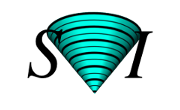Correction of spherical aberration
Spherical Aberration (SA) is introduced in the imaging system among other possible reasons by a Refractive Index Mismatch. Such a mismatch distorts the PSF, causing that the real PSF varies from plane to plane in a continuous way.
The Huygens Software can adapt the theoretical Point Spread Function (PSF) to the sample depth to (partially) correct for spherical aberration while doing deconvolution if such a mismatch is present. In the HRM, you can also specify a depth at which a fixed PSF will be calculated, not using a variant PSF but a distorted one at a certain depth.
Geometry
To make the depth correction of the theoretical PSF, the program needs to know the location of the coverslip in the image: is it placed at the bottom of the image, at lower Z coordinates (as in an inverted microscope), or at the top of it? (The asymmetries in the PSF distortion depend on the optical orientation of the image).
If you are not sure of what is the orientation of your dataset you can always guess it from the asymmetry of the PSF by looking laterally (in a XZ view, for example) at the shape of the cones of light. See Mismatch Distorts Psf.
Should I use the correction?
If your microscope is well aligned and its PSF fits the ideal models quite well, you can use a Theoretical Psf safely. This can make use of a depth-dependent PSF to correct for SA.
If the Experimental Psf is far away from being good (i.e. it is very dissimilar to the theoretical one in size or symmetry) then better use this one. It will take into account all the microscope misalignments, and to correct for that may be more important than the SA correction. If your sample is not very thick, a depth-independent experimental PSF will do it as well.
You can use the PSF generator in the Nyquist Calculator to simulate spherical aberration conditions at different depths inside the sample, and compare the results with your experimental PSF.
Air lenses
Air lenses require special consideration: they may be corrected for spherical aberration and they may behave as, e.g., glycerine lenses, and therefore you will not expect problems if you use glycerol as embedding medium. You can then think about deactivating the SA correction as explained in the previous paragraph. Still a Fishtank Effect may be present that will make things difficult. Read more in Air Lens Correction.
